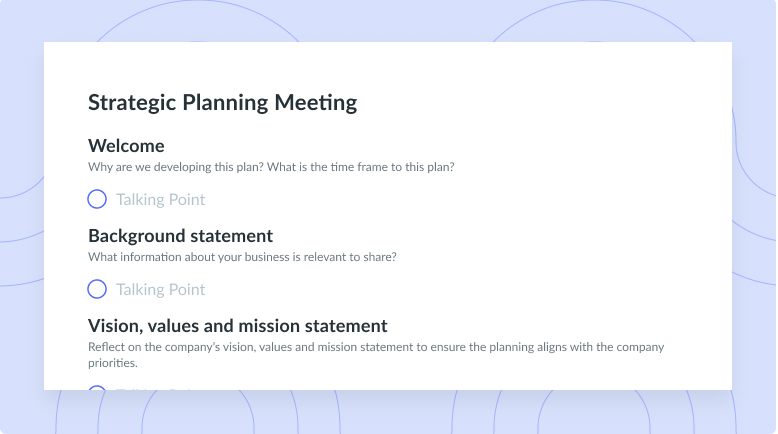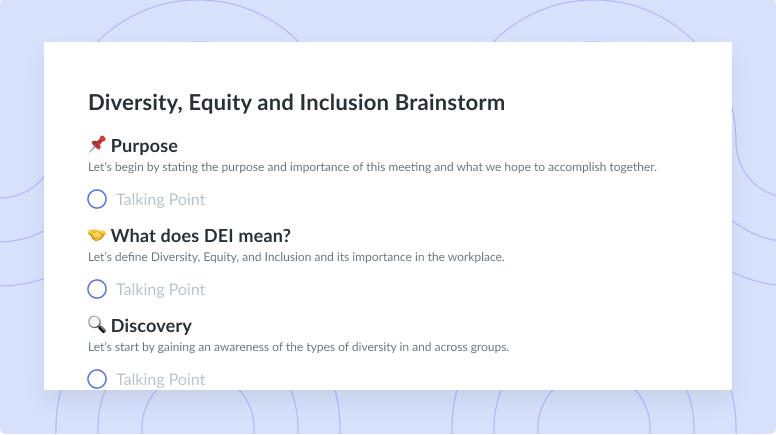Leadership vs. Management: Understanding the Similarities and Differences
Leaders and managers share some qualities, but they’re not quite the same. Here’s where they do and don’t overlap – and why the distinction matters.
When you manage a team, you might think of yourself as its leader. That’s not necessarily inaccurate – but it’s not always accurate, either.
It’s not surprising that the words “leader” and “manager” are sometimes used interchangeably. In reality, though, the leadership vs. management distinction is a big deal. It’s key to organizational structuring, goal-setting, strategy, decision-making processes, and so much more. Read on to learn how the two terms differ and why your team might need distinct leaders and managers to truly grow and thrive.
- What is the definition of leadership?
- What is the definition of management?
- How is leadership different from management?
- What comes first: leadership or management?
- Overlaps for leadership vs. management
What is the definition of leadership?
Leadership is the act – or, perhaps more accurately, the art – of determining an organization’s overall vision. Effective leaders think in terms of ideas, inspire people on their teams, structure their organization’s culture, and think beyond the present into the long-term. All these responsibilities require great leaders to be problem-solvers and risk-takers who think creatively, act as mentors, and effectively motivate their team members.
What is the definition of management?
Management is the act of seeing a leader’s vision to fruition. As such, good managers use the people and resources around them to execute organizational goals on a day-to-day basis. They also think primarily in the present. That means focusing more on tasks, deadlines, and managing work rather than developing the paths that give rise to these tasks in the first place. Alongside all these responsibilities, managers must ensure that the company culture matches the leader’s vision.

Pro tip
Become a great manager and leader starting by having great meetings! Fellow’s collaborative approach transforms meetings into productive work sessions.

Notably, management often requires much more face-to-face interaction with employees than leadership does. A good manager comes to know what makes each of their team members tick – and, just as importantly, what saps or ignites their motivation. Sara Varni, CMO of Twilio, said it best on an episode of the Supermanagers Podcast:
“What motivates you as an employee might not motivate your team members. Getting down to what truly motivates each employee is really critical if you want to drive optimal results across that entire team.”
In other words, management means more than getting all your team’s ducks in a row. It means fully getting to know your employees and structuring your daily tasks to best meet everyone’s strengths, wants, and needs. In doing so, you’re more likely to also meet your entire organization’s strengths, wants, and needs.
How is leadership different from management?
Still confused about the leadership vs. management distinction? We get it – the notion that the two don’t exist in a fully circular Venn diagram can be a bit shocking at first. The below eight differences between leaders and managers should help separate the two roles.
- Leaders think vision.
- Leaders align people.
- Leaders think ideas.
- Leadership is a quality.
- Leaders inspire.
- Leaders look to the future.
- Leaders shape company culture.
1 Leaders think vision. Managers think process.
Good leaders look at the big picture today, tomorrow, and long after. Their objective is to seize opportunities that neither their organization nor any others are pursuing. They set goals that drive an organization toward meaningful change and growth.
Managers become intimately familiar with the big picture that leaders paint. They get to know the goals that leaders have established, and then, they set processes to follow through on these goals. These processes include arranging workflows, hiring the right people, setting detailed budgets, and structuring the organization. In short, they take the steps required to turn an ambitious goal into a reality.
2 Leaders align people. Managers organize them.
Great leaders gradually develop a leadership style through which they can consistently, effectively empower and inspire their team members. Doing so often requires leaders to gently convince team members that all current goals are worth pursuing.
Managers then organize these newly motivated team members. To do so, they’ll typically create decision-making processes, develop and maintain task lists, and delegate work to the appropriate team members. Combined, this leadership-management division yields lofty but realistic goals – and team members who have the knowledge and resources to achieve them.
3 Leaders think ideas. Managers think execution.
Key leadership skills such as creativity, problem-solving, and risk-taking lend themselves to dreaming up out-of-the-box ideas. These sorts of ideas underlie all kinds of success stories, from the social media boom to the grand opening or a product launch. The leaders behind these entities succeeded because they identified gaps and determined risky but potentially fruitful ways to close them. They pursued these goals with the help of managers and teams, and they wound up succeeding.
This point bears repeating: Leaders rarely achieve their goals without managers. In cases like those above, managers put in all the groundwork – organizing time, obtaining resources, moving through processes, managing people, the list goes on. Every item on that list, though, has one thing in common: execution. Where leaders brainstorm, managers develop the action plans required to turn big ideas into realities. That’s perhaps the most tangible difference between leaders and managers.
4 Leadership is a quality. Management is a position.
Look at the job titles within your organization. You might have project managers and department heads, but you likely don’t have people formally designated as leaders. That’s because leadership isn’t a position. It’s a quality.
Sure, you could argue that leadership positions exist – CEOs, executives, team heads, the list goes on. However, none of these positions actually require leadership in their job descriptions. More likely, the work described for department heads is that of management – organizing your people and resources, checking boxes, establishing workflows.
Leadership involves shaping the environment in which all these tasks happen in the first place. It essentially describes all the unwritten rules of being a high-ranking figure within an organization. Maybe you’re the public face of the company, but you’re also the go-to person for motivating your employees and bringing out their best. That makes you a leader.
5 Leaders inspire. Managers drive.
A leader’s role within an organization is to enliven and energize a team. Doing so involves helping team members see the meaning in what you do and how your work can lead to personal fulfillment. If you think of these leader-developed revelations as the structure of a car, then managers drive the car and team members are the passengers.
Managers harness the passion and skills of team members to guide everyone from point A to point B. They navigate your team through its daily tasks after you’ve aligned everyone toward a common goal. Think of managerial work as an extension of leadership: If leaders build the path, managers ensure the team traverses it smoothly.
6 Leaders look to the future. Managers focus on the present.
As ideas-first people, leaders have to think big-picture. A proper big-picture view means looking at the long term rather than solely the present. A leader focused on reaching a certain market share within their organization’s footprint will know that this process can take several months. That’s why the strategies they dream up for achieving their goals start today but end long after.
Managers, on the other hand, take things day by day. A good management style helps team members access everything they need to complete all daily steps to take toward longer-term goals. They need to ensure that things A, B, and C are done before moving on to things D, E, and F. This sequencing is how teams achieve their loftiest goals, and it’s why managers focus on the now rather than the later.
7 Leaders shape company culture. Managers spread it.
Determining an organization’s fundamental beliefs and values – together known as company culture – falls upon leadership. These ideas are, well, ideas, not executable things. As such, they’re leadership responsibilities by definition.
At the same time, company culture shapes which behaviors are and aren’t appropriate for your team. That’s where managers step in. Managing people means both guiding their work and assessing how their behaviors do and don’t fit the company culture.
For example, in a caring culture, a manager would encourage and reward cross-functional collaboration. On the other hand, in a risk-conscious culture, managers might discourage cross-functional collaboration since it can distract team members from their primary tasks. In both cases, the manager hasn’t decided the culture – that was the leader’s doing. The manager is just there to spread that culture.
What comes first: leadership or management?
We’ll admit it: This is a big question. We’ll also state another caveat: There’s no objective answer to this question. Leadership doesn’t necessarily preclude management or vice versa. However, if you look at several examples of team members who have successfully climbed the corporate ladder, you might notice that most managers have long displayed leadership qualities.
Think about it: If you were looking for an employee to promote to manager, who would you consider first? You’d probably start with your employees who are well-organized, willing to help others, unafraid to ask for help themselves, and deft at problem-solving. These qualities define good management. However, these team members likely stand out so strongly from their colleagues because they show a knack for innovation, risk-taking, motivation, and creativity.
In other words, they’re natural-born leaders.
Overlaps for leadership vs. management
The above example shows that leadership and management aren’t 100% distinct. Yes, the separation between the two is important to understand, but they do overlap in several ways. Good leaders and managers alike must be masterful at the following skills:
- Communication. All team members should be able to communicate clearly, but this skill set is especially important for leaders and managers. A leader who can’t properly explain their vision may fail to motivate their team or set meaningful objectives and key results. A manager who fails to properly share resources and guidance with their team could encounter missed deadlines, shoddy work, and perhaps even failure.
- Problem-solving. Managers must regularly solve the problem of how to delegate tasks so that all team members share equal burdens and nobody is overworked. Leaders must solve the problem of how to reshape their organization’s goals, vision, mission, and values to keep it successful amid opportunities and threats. The problems being solved are different, but the ability to strategically solve them is shared.
- Decision-making. Leaders make decisions that affect the entire organization. Managers make decisions that affect daily output. Yes, the scale of these two types of decisions is quite different, but they’re both decisions that must be made.
- Crisis management. Teams can face unexpected crises when clients express unhappiness about the work that’s been done. In that case, managers must liaise with the client and put together a plan to rapidly produce satisfactory work. Leaders will inevitably need to manage much bigger crises, ranging from PR scandals to disruptions in the supply chain.
- Professional development. Leaders and managers can both act as mentors and help team members reach their professional goals. Leaders can do so on an ideological level – they might be better equipped to help team members reframe how they view their work. Managers can mentor team members in specific skills that folks higher on the corporate ladder regularly use. Either way, professional development results.
- Meetings. Look at a leader or manager’s calendar, and you’ll see an abundance of all types of meetings – likely more than other team members attend. Leaders might find themselves in leadership decision-making meetings whenever key goals or ideas need to be brought to their final states. Managers often hold regular one-on-one meetings with their team members. The time commitments may seem substantial, but the results are often well worth the while.
It’s not leadership vs. management – it’s leadership and management
Leadership is more effective when managers are also in the picture, and team members promoted to managerial roles often display leadership qualities. The question isn’t which methodology is superior – it’s how you can best harness both.
A great start is to streamline your meetings, as these events can comprise quite a bit of a leader or manager’s time. On that front, Fellow offers tools for writing meeting agendas, assigning meeting action items, obtaining peer feedback, and taking notes. The result is more efficient, meaningful, results-heavy meetings that can help great leaders and managers become truly exceptional ones.




























